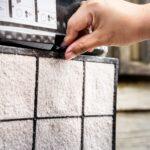Confession time: at that point in the year when the evenings grow cooler and the mornings feel downright chilly, do you sometimes flip your thermostat to “heat” instead of “cool” and move on with your life?
We understand if you do. Who wants to be uncomfortable in their own home when a flip of a switch can fix that?
But today we’re here to say: don’t.
At least not until you take care of some fall furnace maintenance first.
Without maintenance every fall, your furnace can cause problems that range from inconvenient to expensive to dangerous. So you want to make sure your furnace is ready before you flip that switch.
Here’s what we’ll cover in this post:
- The 7 Reasons Why a Fall Furnace Tune-Up Is Important
- What Fall Furnace Maintenance Should Include
- Your Next Steps for Getting the Most out of Your Fall Furnace Maintenance
Before it gets any colder outside here in the South Hills of Pittsburgh, let’s get to it!
7 Reasons Why a Fall Furnace Tune-Up is Important
We say this a lot: a quality furnace is a durable piece of machinery that should last you a long time. It is also a complex piece of machinery that probably won’t last you a long time without regular attention and care.
Here are seven reasons why you should have your furnace serviced every fall:
1. To Minimize Carbon Monoxide Levels
Let’s start with the most critical reason first: regular furnace check-ups keep you and your family safe from carbon monoxide poisoning.
One of the primary components of your furnace is the heat exchanger. It safely removes carbon monoxide, a by-product of a furnace’s combustion process, from your home.
Standard efficiency furnaces typically have one heat exchanger, and higher efficiency furnaces often have two. They’re made of strong, flexible metals that resist corrosion and withstand high temperatures.
But still, heat exchangers eventually form cracks. This is because they are constantly expanding and contracting in response to heating cycles over time. When heat exchangers crack, carbon monoxide gets mixed with warm indoor air. This is a risky and potentially lethal situation.
So during a fall furnace tune-up, an HVAC pro will inspect your heat exchanger to ensure it is free of cracks and corrosion. A pro will also test the level of carbon monoxide that your furnace produces when it runs.
2. To Preserve Your Home’s Air Quality
If your furnace isn’t cleaned routinely, the indoor air you breathe isn’t clean, either.
This is especially true if you don’t clean or replace your furnace filter according to a proper schedule.
Furnace filters trap dust, debris, pet dander, pollen, mold, and all kinds of other airborne particles and contaminants. Filters block all this dirt from invading your indoor air by keeping it away from your furnace components – especially your blower motor.
A fall furnace maintenance appointment provides you with a brand new filter (or a freshly cleaned one, if you have a permanent filter). This sets you up for fresh, clean, warm air all winter.
3. To Avoid Emergency Service
Every winter, homeowners without heat make panicked emergency calls to HVAC pros.
A lot of these calls are preventable. They’re often the result of minor problems that a fall furnace maintenance appointment would have fixed.
For example, take the furnace flame sensor. Its job is to detect the presence of heat within a few seconds after your furnace ignites. If it doesn’t, it shuts down your furnace.
A common problem with flame sensors is carbon buildup, which prevents their ability to detect anything. Dirty flame sensors shut down furnaces. But regular furnace tune-ups keep your flame sensor clean and your furnace running.
4. To Save on Utility Bills
A furnace running at peak efficiency uses less energy to produce heat.
This is reflected in your utility bills. An efficient furnace lowers them.
But your furnace can run at peak efficiency only when its components are clean and calibrated.
All electrical and mechanical parts must be free of dust and grime. Many parts must be regularly lubricated. Worn or damaged parts must be repaired or replaced.
With a fall tune-up, all the components of your furnace get the inspection, cleaning, and service they need.
Without tune-ups, your furnace may still work – for a while. But with each passing year, it will have to work harder. And your utility bills will show it.
5. To Save on Furnace Repairs and Replacement
When your furnace is running at peak efficiency, lower utility bills are not the only benefit. Another huge benefit is furnace longevity.
Regular fall maintenance minimizes the wear and tear that makes your furnace run harder and deteriorate more quickly.
In other words, regular fall maintenance saves you the cost and hassle of furnace repairs. It also saves you the major expense – and regret – of a furnace replacement too soon.
6. To Keep Your Furnace Warranty Valid
Neglecting routine maintenance can void your furnace warranty, and put the financial burden of repairs solely on you.
These days, the warranties from most furnace manufacturers require yearly maintenance. Further, they also require proof of maintenance in any cases where you’re making a claim.
So for your routine furnace tune-ups, you’ll want to hire a quality HVAC pro who will provide you with an itemized receipt.
An HVAC pro with exceptional customer service will even handle all the paperwork for you and schedule your maintenance appointments automatically.
7. To Even Out Your Heat
Are there spots in your home where you’re too chilly or too warm, even when your thermostat is set to a reasonable temperature?
Uneven heat is often the result of furnace components that simply need a bit of attention. For example:
- A blower motor that needs cleaning can’t circulate air throughout your home consistently.
- Thermostat controls that need calibration can’t read room temperatures accurately.
- Clogged filters or clogged supply vents can’t produce ample airflow.
These furnace issues have simple fixes. Regular maintenance delivers them.
What Fall Furnace Maintenance Should Include
Now that you know why fall furnace maintenance is important, what exactly should you expect from the HVAC pro who does the job?
Here are the services that a top-quality HVAC company will perform as part of fall furnace maintenance:
1. Change or Clean your Furnace Filter
Airflow has a big impact on your indoor climate and your comfort level.
And for the best airflow – which is unrestricted and clean – you need a clean furnace filter.
An HVAC pro will replace your filter with a new one, or clean it if it’s a permanent model. This way you start the heating season with a (literally) clean slate.
The HVAC technician can also show you how to replace the filter yourself. This is especially useful if the type of filter you have requires frequent changes throughout the year.
Remember that in central HVAC systems, your “furnace” filter also serves your air conditioner. It’s just called a furnace filter because of its location in your furnace cabinet. It’s been working for you all summer, so a replacement or cleaning in the fall is the perfect time.
2. Inspect All Equipment
Earlier we mentioned the importance of your furnace’s heat exchanger – it keeps carbon monoxide out of your home. An HVAC pro will inspect your heat exchanger to ensure it has no cracks or rust.
An HVAC pro will also verify the integrity of all the other parts of your furnace, including the blower motor, fan, gas valve, burners, electrical switches, and connectors.
3. Clean All Equipment
An efficient, reliable, and safe furnace is a clean furnace. Various components take on buildup throughout the year, which impacts their performance and the air you breathe.
An HVAC pro will clean the flame sensor, heat exchanger, burners, blower assembly, and of course, your filter. If you have a mini-split, the technician will clean the unit and all its components.
4. Test and Adjust Gas Pressure
The pressure level of the gas in your furnace is extremely important for its performance and longevity. If it’s too low, combustion is poor, and you lose efficiency. If it’s too high, your furnace can overheat.
A furnace’s gas valve is responsible for regulating gas pressure and tailoring it to the specific capabilities and demands of your model. An HVAC pro will test the valve, measure gas pressure with a manometer, and adjust the level as needed.
5. Inspect and Clear the Drain Line
Your condensate drain line funnels the moisture produced by the heating and cooling process away from your furnace, and out of your home.
Like other parts of your furnace, your drain line can become clogged with dirt and debris. When this happens, water can back up into your HVAC equipment. The result is mold growth, corrosion, and equipment failure.
An HVAC pro will inspect your condensate drain line and clear it if necessary.
6. Verify that Your Furnace is Performing to Standard
For efficiency, safety, and comfort, your furnace shouldn’t be merely operational. All its parts must be performing to the specifications outlined by the manufacturer.
An HVAC pro will run a few heating cycles, observe and take measurements, and ensure that your furnace is running at its best.
7. Measure Carbon Monoxide Levels
While keeping you warm, your furnace also has to keep you safe. Carbon monoxide is a by-product of the combustion process, and your furnace has components – specifically the heat exchanger – tasked with the job of removing this toxic gas.
When putting your furnace through its paces during fall maintenance, an HVAC pro will also measure the resulting carbon dioxide levels in your home. If they’re unacceptable, a technician will make the necessary adjustments and repairs.
8. Bonus: Inspect Your Water Heater
A faulty gas water heater can emit carbon dioxide too. So regular inspections of your water heater, and measuring the carbon monoxide levels in the room where it’s located, are critical.
A thorough HVAC pro will inspect your water heater as part of routine fall maintenance – especially one that offers plumbing services too.
9. Recommend Service, If Necessary
Obviously, a thorough fall maintenance visit may uncover issues with your furnace. A quality HVAC company will be able to make any quick repairs on the spot if their schedule allows.
Your HVAC pro will also identify any repairs, replacements, or upgrades that may require more time or additional parts, and help you schedule them.
Your Next Steps for Getting the Most out of Your Fall Furnace Maintenance
So, you’re on board with why your furnace needs fall maintenance, and you know what to expect during a furnace tune-up.
Here’s what to do next – two easy steps toward making sure you’re warm all winter:
1. Call a trustworthy HVAC company and schedule a fall maintenance visit.
Check reviews, ask friends and neighbors for recommendations, and choose an expert HVAC company that stands behind its work.
Yearly maintenance deserves continuity and follow-through. You want your HVAC company to be there for you from year to year, and to have familiarity with your HVAC system as it ages. You can’t always get these qualities from a generalist or a one-off repair person.
2. Before the day of your fall maintenance visit, clear your furnace area of any items you store there.
Any HVAC company can tell you that their technicians often have to double as movers. When boxes of seasonal decorations, sports equipment, old files, clothing, and whatever else are blocking the furnace, the HVAC pro has to spend time dealing with them, and less time doing the job you hired them for.
Plus, crowding your furnace area is not ideal for ventilation. So keeping this area free of obstructions is a good idea all year round.
_____________
When you’re ready to call for your fall maintenance visit in the South Hills of Pittsburgh, give us a ring or text us at 412-952-5923. Kowalski Heating, Cooling, and Plumbing offers customized maintenance plans that include a furnace tune-up every fall and an air conditioning tune-up every spring.
And if you have any questions, we’re happy to answer. Please contact us any time. We look forward to serving you!





